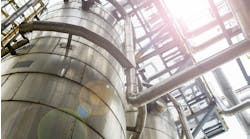Energy efficiency is closely tied to decarbonization. This means it also is closely tied to a huge elephant in the room — climate change. The problem with this particular elephant is that it not only is huge, it also is multidimensional. To make the problem manageable, let’s simplify it by reducing it to just two dimensions — climate science and political/economic issues. It is important not to conflate these two dimensions; to do so invites miscommunication and conflict.
The greenhouse effect — fundamental to climate science — has been known for over 100 years. The Swedish Nobel laureate Svante Arrhenius (1859–1927) was one of the first to publish on this topic. The basic concept is this: Incoming radiant energy from the sun, mostly in the form of visible light, passes through the atmosphere without being absorbed. However, it is absorbed when it reaches the earth’s surface. The energy is then reradiated away from the earth’s surface in the infrared range. Certain “greenhouse gases” in the atmosphere, most notably carbon dioxide (CO2), absorb infrared radiation. When they desorb or reradiate this energy, the radiation can go in any direction. While some of it continues through the atmosphere and into space, much of it returns to earth, where it is again absorbed, increasing the surface temperature (get a quick Energy Education here).
A positive side exists to the greenhouse effect. Without it, scientists estimated the average temperature at the earth’s surface would be reduced by more than 50°F. This would make much of the planet a frozen wasteland. However, reliable measurements show that atmospheric CO2 levels have risen by around 50% since the industrial revolution, from 280 ppm to nearly 415 ppm. This increase is consistent with the known quantities of greenhouse gases released by human activity. Measurements also show a small but statistically significant rise in the average temperature at the earth’s surface; this increase is consistent with the observed rise in CO2 levels. It is hard to escape the conclusion that anthropogenic global warming is happening.
Climate science encompasses much more than the greenhouse effect. Computer models incorporating many additional factors can model local and global climates, test theories and develop scenarios for future climate trends. A pervasive conclusion is that unless a rapid reduction in anthropogenic greenhouse gas emissions occurs, global warming will continue. This will give rise to increasingly extreme weather events that, in turn, could lead to flooding, wind damage, sea-level rise and, in some cases, to droughts or abnormally cold conditions. The impact on human well-being would be severe — arguably devastating, even existential.
The reality of global warming is now very widely acknowledged. Recent surveys show well over 70% of Americans accept that climate change is happening (an article in Popular Mechanics and this PDF from the University of Houston back up those claims). As the science has improved and awareness increased, a determined climate action movement has developed, committed to reversing the rise of atmospheric greenhouse gases and stopping climate change.
Manufacturing accounts for 33% of primary energy demand in the United States, and a similar percentage of greenhouse gas emissions (the EPA offers insight about the emissions inventory). Not surprisingly, the sector has attracted the attention of the climate action movement. The oil refining and petrochemical industries face even greater scrutiny, along with the upstream and midstream oil and gas industries, because of their association with fossil fuels and hydrocarbons.
The manufacturing sector produces 11% of the U.S. gross domestic product — roughly 2.3 trillion dollars in 2020 (Trading Economics and statista illustrate this). This represents jobs, taxes, pensions, investment income and countless other benefits to individuals and communities across the country. It also employs many voters with disparate political preferences, spread unevenly across the nation.
The challenge in the process industries today is to maintain the viability of our enterprise, and the societal benefits it provides, while also addressing the clear and present danger of global warming. Achieving these twin objectives will require clear thinking, collaboration and the concerted efforts of a multitude of people. The solution must surely demand new technologies — an area where engineers excel; in addition, it will require business leadership, entrepreneurship and financing, reskilling and upskilling the workforce, and social and political acceptance for policy changes at local, national and international levels. This is a massive endeavor, and it already is in progress. The goal is the most-significant transformation of the process industries in over a century.



